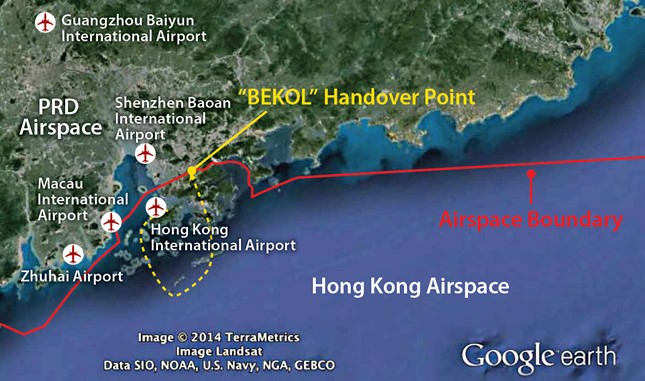-
01Why is the three-runway system (3RS) necessary?
The 3RS is critical for meeting long-term air traffic demand at Hong Kong International Airport (HKIA) and strengthening Hong Kong’s status as a leading aviation hub. It is also an integral part of our long-term vision to transform HKIA from a city airport into an Airport City.
HKIA supports Hong Kong’s four economic pillars – financial services, trading and logistics, tourism, and producer and professional services – which together accounted for approximately 57% of the city’s GDP in 2018 according to government statistics. The 3RS has created many job opportunities in Hong Kong, and it will continue to do so.
The 3RS project is progressing well. The construction of the third runway is expected to be completed in 2022, and the entire 3RS is expected to be finished in 2024.
-
02How will the three runways operate in the future?
While all three runways will be equipped to handle takeoffs and landings, each one will be assigned to function as follows in order to optimise the efficiency of the 3RS: the northern runway will be used for landings, the central runway will be dedicated for takeoffs, and the southern runway will accommodate both landings and takeoffs. This is the most efficient mode of operation according to an independent consultancy study. In fact, the southern runway of the current two-runway system is also used mainly for takeoffs, while the northern runway is primarily for landings.
-
03How is the 3RS funded?
The estimated construction cost is HK$141.5 billion at money-of-the-day prices. The overall financial arrangements for the 3RS are based on the “joint contribution and user-pay” principle. Funding is provided through three sources: retaining operating surplus of the Airport Authority Hong Kong (AAHK), levying an airport construction fee (ACF) on passengers departing from HKIA, and borrowing funds from the market through bank loans and bonds.
The ACF is collected on air tickets issued on or after 1 August 2016. Airlines collect ACFs from departing passengers – including origin-destination and transit/transfer passengers – at HKIA when air tickets are issued. ACF collection will be in effect until all borrowings related to the 3RS project are fully repaid. The charging rate for the ACF is fixed throughout the collection period.
-
04With the 3RS, how will HKIA cooperate with other airports in the Guangdong–Hong Kong–Macao Greater Bay Area (GBA) in the future?
The five major airports in the GBA – Guangzhou Baiyun International Airport, HKIA, Macau International Airport, Shenzhen Bao’an International Airport and Zhuhai Airport – have been meeting regularly since 2001 to strengthen collaboration and promote the airports’ mutual interests.
In February 2019, the Outline Development Plan for the GBA was promulgated by the Central Government. The plan affirmed Hong Kong’s status as an international aviation hub and HKIA’s future development direction. It also stated that a world-class airport cluster in the GBA should be developed, and that differential development and positive interaction between airports in the GBA should be pursued.
AAHK is working closely with its stakeholders on future developments according to the directions laid down in the Outline Development Plan, with the aim of strengthening and enhancing Hong Kong’s status as an international aviation hub and aviation manpower training centre.
-
05Will the 3RS be constrained by GBA airspace?
In order to rationalise and optimise airspace management in the GBA, the Civil Aviation Administration of China, Civil Aviation Department of Hong Kong and Civil Aviation Authority of Macao have been working together to formulate measures to enhance air traffic management arrangements in the region.
The three authorities are working jointly on modelling and simulating the GBA’s airspace and air traffic to evaluate the impact of air traffic demand on the region. This will help facilitate HKIA’s 3RS operations as well as the sustainable development of the Macao, Guangzhou, Shenzhen and Zhuhai airports.
-
06Does the “air wall” restrict runway capacity? What determines runway capacity?
The so-called “air wall” refers to the boundary between airspaces (or the “point of control transfer”) where an aircraft needs to reach a certain altitude before an air traffic control (ATC) unit may hand over control to another ATC unit. The arrangement ensures that aircraft in adjacent airspaces can operate in a safe, efficient manner. It is commonly applied by busy airports all over the world and is not relevant to runway capacity.
The constraints of runway capacity are determined by the time interval and space separation between successive flight movements. In addition, as there is a 10-minute flying distance between HKIA runways and the “point of control transfer”, runway operations are not affected by the requirement of a minimum altitude.

-
07What measures have been taken to conserve the environment when implementing the 3RS project?
AAHK has striven to balance between development and environmental conservation as it brings the 3RS project to fruition.
AAHK conducted a comprehensive Environmental Impact Assessment (EIA) for the 3RS. The EIA included more than 250 mitigation measures – such as using non-dredge reclamation methods, implementing an environmental monitoring and audit programme before and throughout construction, and designating a 2,400-hectare marine park in north Lantau waters – to address and mitigate potential impacts across 12 key environmental aspects.
AAHK is dedicated to fulfilling all the commitments made in the EIA Report and complying with the subsequent conditions and requirements outlined in the Environmental Permit for the 3RS. A dedicated website, http://env.threerunwaysystem.com, has also been set up for reporting environmental monitoring and audit data as well as other relevant information about the 3RS project.
